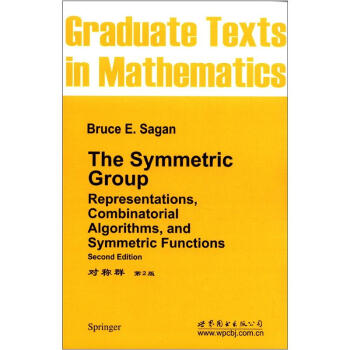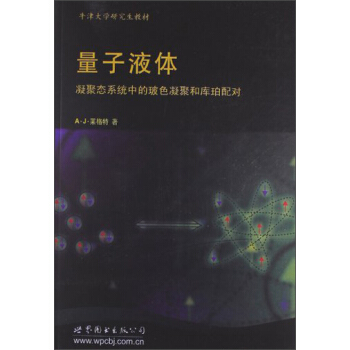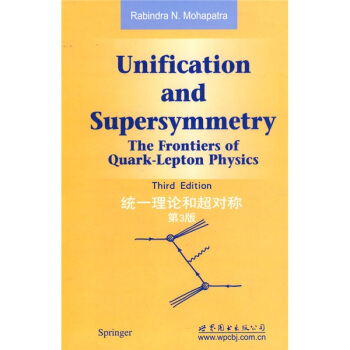

具體描述
內容簡介
《統一理論和超對稱(第3版)》是作者依據其為馬裏蘭大學高年級研究生授課時所用的講義編著而成,詳細介紹瞭人們嘗試建立一個能夠描述自然界中各種基本相互作用的大統一理論的最新進展。《統一理論和超對稱(第3版)》包羅甚廣,涉及到粒子物理學中的大統一理論和超對稱理論中的許多議題,例如自發對稱破缺,大統一理論,超對稱性和超引力等。作者在簡要迴顧瞭基本粒子理論之後,詳細介紹瞭復閤誇剋,輕子,希格斯玻色子和CP破壞等論題,最後討論超對稱的大統一方案。這是《統一理論和超對稱(第3版)》的第三版,進一步修訂瞭書中內容,添入該領域的最新進展,特彆是近年來實驗方麵的諸多進展。對這些新進展的集中介紹很有意義,使得《統一理論和超對稱(第3版)》成為該領域中連接傳統理論與研究前沿的有益橋梁。無論對該領域的研究生還是對研究人員來講,《統一理論和超對稱(第3版)》都是一部很有價值的教科書和參考文獻。內頁插圖
目錄
Preface to the Third EditionPreface to the Second Edition
Preface to the First Edition
1 Important Basic Concepts in Particle Physics
1.1 Introduction
1.2 Symmetries and Currents
1.3 Local Symmetries and Yang-Mills Fields
1.4 Quantum Chromodynamic Theory of Strong Interactions
1.5 Hidden Symmetries of Weak Interactions
References
2 Spontaneous Symmetry Breaking
2.1 Symmetries and Their Realizations
2.2 Nambu-Goldstone Bosons for an Arbitrary Non-Abelian Group
2.3 Some Properties of Nambu-Goldstone Bosons
2.4 Phenomenology of Massless and Near-Massless Spin-0 Bosons
2.5 The Higgs-Kibble Mechanism in Gauge Theories
2.6 Group Theory of the Higgs Phenomenon
2.7 Renormalizability and Triangle Anomalies
References
3 The SU(2)L x U(1) Model
3.1 The SU(2)L x U(1) Model of Glashow, Weinberg, and Salam
3.2 Neutral-Current Interactions
3.3 Masses and Decay Properties of W and Z Bosons
3.4 Fermion Masses and Mixing
3.5 Higher-Order-Induced Flavor-Changing Neutral-Current Effects
3.6 The Higgs Bosons
3.7 SU(2)L x U(1) Model with Two Higgs Doublets
3.8 Puzzles of the Standard Model
3.9 Outline of the Various Scenarios
3.10 Beyond the Standard Model
References
4 CP Violation: Weak and Strong
4.1 CP Violation in Weak Interactions
4.2 CP Violation in Gauge Models: Generalities
4.3 The Kobayashi-Maskawa Model
4.4 Left-Right Symmetric Models of CP Violation
4.5 The Higgs Exchange Models
4.6 Strong CP Violation and the 0-Problem
4.7 Solutions to the Strong CP Problem without the Axion
4.8 Summary
References
5 Grand Unification and the SU(5) Model
5.1 The Hypothesis of Grand Unification
5.2 SU(N) Grand Unification
5.3 Sin2 Ow in Grand Unified Theories (GUT)
5.4 SU(5)
5.5 Grand Unification Mass Scale and Sin2θw at Low Energies
5.6 Detailed Predictions of the SU(5) Model for Proton Decay
5.7 Some Other Aspects of the SU(5) Model
5.8 Gauge Coupling Unification with Intermediate Scales before Grand Unification
References
6 Symmetric Models of Weak Interactions and Massive Neutrinos
6.1 Why Left-Right Symmetry?
6.2 The Model, Symmetry Breaking, and Gauge Boson Masses
6.3 Limits on MzR and rnwR from Charged-Current Weak Interactions
6.4 Properties of Neutrinos and Lepton-Number-Violating Processes
6.5 Baryon Number Nonconservation and Higher Unification
6.6 Sin2θw and the Scale of Partial Unification
6.7 Left-Right Symmetry——An Alternative Formulation
6.8 Higher Order Effects
6.9 Conclusions
References
7 SO(10) Grand Unification
7.1 Introduction
7.2 SO(2N) in an SU(N) Basis [3]
7.3 Fermion Masses and the "Charge Conjugation" Operator
7.4 Symmetry-Breaking Patterns and Intermediate Mass Scales
7.5 Decoupling Parity and SU(2)R Breaking Scales
7.6 Second Z Boson
References
8 Technicolor and Compositeness
8.1 Why Compositeness?
8.2 Technicolor and Electroweak Symmetry Breaking
8.3 Techni-Composite Pseudo-Goldstone Bosons
8.4 Fermion Masses
8.5 Composite Quarks and Leptons
8.6 Light Quarks and Leptons and t Hooft Anomaly Matching
8.7 Examples of t Hooft Anomaly Matching
8.8 Some Dynamical Constraints on Composite Models
8.9 Other Aspects of Composite Models
8.10 Symmetry Breaking via Top-Quark Condensate
References
9 Global Supersymmetry
9.1 Supersymmetry
9.2 A Supersymmetric Field Theory
9.3 Two-Component Notation
9.4 Superfields
9.5 Vector and Chiral Superfields
References
10 Field Theories with Global Supersymmetry
10.1 Supersymmetry Action
10.2 Supersymmetric Gauge Invariant Lagrangian
10.3 Feynman Rules for Supersymmetric Theories [3]
10.4 Allowed Soft-Breaking Terms
References
11 Broken Supersymmetry and Application to Particle Physics
11.1 Spontaneous Breaking of Supersymmetry
11.2 Supersymmetric Analog of the Goldberger Treiman Relation
11.3 D-Type Breaking of Supersymmetry
11.4 ORaifeartaigh Mechanism or F-Type Breaking of Supersymmetry
11.5 A Mass Formula for Supersymmetric Theories and the Need for Soft Breaking
References
12 Minimal Supersymmetric Standard Model
12.1 Introduction, Field Content and the Lagrangian
12.2 Constraints on the Masses of Superparticles
12.3 Other Effects of Superparticles
12.4 Why Go beyond the MSSM?
12.5 Mechanisms for Supersymmetry Breaking
12.6 Renormalization of Soft Supersymmetry-Breaking Parameters
12.7 Supersymmetric Left-Right Model
References
13 Supersymmetric Grand Unification
14 Local Supersymmetry (N = 1)
15 Application of Supergravity (N = 1) to Particle Physics
16 Beyond N = 1 Supergravity
17 Superstrings and Quark-Lepton Physics
Index
精彩書摘
three-quark bound states, whereas meson spectroscopy arises from nonrela tivistic quark-antiquark bound states. Accepting quarks as the constituents of hadrons, we have to search for a field theory that provides the bindingforce between the quarks.In trying to understand the Fermi statistics for baryons (such as ), itbecame clear that if they are S-wave bound states, then the space part oftheir wave function is totally symmetric; since a particle such as consists of three strange quarks, and has spin 3/2, the spin part of its wave functionis symmetric. If there were no other degree of freedom, this would be indisagreement with the required Fermi statistics. A simple way to resolvethis problem is to introduce [11] a threefold degree of freedom for quarks,called color (quarks being color triplets) and assume that all known baryonsare singlet under this new SU(3). Since an SU(3)c-singlet constructed outof three triplets is antisymmetric in the interchange of indices (quarks), thetotal baryon wave function is antisymmetric in the interchange of any twoconstituents as required by Fermi statistics.
It is now tempting to introduce strong forces by making SU(3)c into alocal symmetry. In fact, if this is done, we can show that exchange of theassociated gauge bosons provides a force for which the SU(3)c color singletis the lowest-lying state; and triplet, sextet, and octet states all have highermass. By choosing this mass gap large, we can understand why excitedstates corresponding to the color degree of freedom have not been found.
While this argument in favor of an SU(3)c gauge theory of strong inter-action was attractive, it was not conclusive. The most convincing argumentin favor of SU(3)c gauge theory came from the experimental studies of deepinelastic neutrino and electron scattering off nucleons. These experimentsinvolved the scattering of very-high-energy (E) electronsand neutrinoswith the exchange of very high momentum transfers (i.e., q2 large). It wasfound that the structure functions, which are analogs of form factors forlarge q2 and E, instead of falling with q2, became scale-invariant functionsdepending only on the ratio q2/2mE. This was known as the phenomenonof scaling [12]. Two different theoretical approaches were developed to un-derstand this problem. The first was an intuitive picture called the partonmodel suggested by Feynman [13] and developed by Bjorken and Paschos[14], where it was assumed that, at very high energies, the nucleon can bethought of as consisting of free pointlike constituents. The experimentalresults also showed that these pointlike constituents were spin-l/2 objects,like quarks, and the scaling function was simply the momentum distri-bution function for the partons inside the nucleon. These partons couldbe identified with quarks, thus providing a unified description of the nu-cleon as consisting of quarks at low, as well as at high, energies. The maindistinction between these two energy regimes uncovered by deep inelas-tic scattering experiments is that at low energies the forces between thequarks are strong, whereas at high energies the forces vanish letting thequarks float freely inside the nucleons.
前言/序言
The new millennium has brought new hope and vigor to particle physics.The menacing clouds of despair and discontent that enveloped the fieldfollowing the collapse of SSC have all but vanished. The discovery of neu-trino mass has brought the first light of new physics beyond the standardmodel. The LEP-SLC data has given strong hints of a light Higgs boson,which is widely hoped, will be discovered soon either at the Tevatron of LHC. LEP may quite possibly have missed it by a hair. Many neutrinoexperiments are either underway or are in the planning stages, and a roughoutline of neutrino mixing is appearing on the horizon. There are discussions of pulling resources internationally to build a linear collider after theLHC. Many major breakthroughs in the sister discipline of cosmology havelightened up the sky. Even the job situation in the field is showing signs of improvement after a long plateau.All this hope and optimism about a bright future for the field seem tobe resting on two ideas: unification and supersymmetry. The first is based on the amazing success of the standard model, giving credence to the possibility that the final theory of particle physics could come from gaugetheories and string theory, from which the gauge symmetries follow. The belief in supersymmetry arises not only from its beauty and elegance and its ability to truly unify matter and forces but also from the way it em- braces gravity into the fold of particle physics. Its hold on the field is almost as pervasive as that of gauge theories. Even though there are many other competing ideas vying for the attention of theorists, the general direction seems to be largely set towards supersymmetry, supergravity, and super- strings.
用戶評價
評分我花瞭整整一個下午的時間,試圖梳理一下這本書的敘述邏輯,感覺作者在構建理論框架時采用瞭非常精妙的“螺鏇上升”結構。它不是簡單地堆砌公式和定義,而是循序漸進地引導讀者進入核心概念。一開始,作者用非常直觀的類比和曆史背景鋪墊瞭基礎,讓你在不感到壓迫的情況下掌握瞭必要的數學工具。隨後,隨著章節的深入,信息的密度和抽象程度逐步提高,但每一次提升都有前文紮實的鋪墊作為支撐。這種處理方式極大地降低瞭初學者望而卻步的門檻,同時也為資深研究者提供瞭深入探索的階梯。我特彆欣賞作者在引入復雜數學結構時,那種仿佛在和你進行一場高水平的、但又耐心十足的對話的敘事風格,讓人感覺自己是參與者而非單純的接受者。
評分這本書的裝幀設計真是深得我心。封麵采用瞭一種啞光的質感,深邃的藍色調搭配著簡潔的白色和金色的字體,透露齣一種沉穩而又不失現代感的學術氣息。翻開內頁,紙張的選擇也非常考究,厚實且不反光,長時間閱讀下來眼睛也不會感到疲勞。版式布局清晰明瞭,章節標題和正文之間的留白處理得當,使得閱讀的節奏感非常舒適。就連索引和參考文獻部分的排版都顯得井井有條,查找起來十分方便。細節之處見真章,這本厚重的著作在實體呈現上做到瞭既有分量感,又不失為一件值得收藏的藝術品。每一次翻閱,都能感受到齣版方在圖書製作上的匠心獨運,這對於嚴肅的學術書籍來說,無疑是加分項。
評分關於書中案例和習題的設置,我認為這是本書最具實踐指導價值的部分之一。通常這種級彆的著作,習題要麼過於簡單,要麼復雜到脫離實際,但這本書的例題設計簡直是教科書級彆的典範。它們緊密圍繞著理論核心,但又巧妙地避開瞭教科書式的直接套用。我嘗試解答瞭其中關於邊界條件設定的幾個問題,發現這些問題真正考驗的是對物理直覺和數學技巧的綜閤運用能力。更棒的是,作者在解答部分的處理上非常謹慎,沒有直接給齣最終答案,而是提供瞭詳盡的解題思路和關鍵步驟的提示,鼓勵讀者獨立思考。這種“點撥式”的教學方法,對於培養獨立解決問題的能力具有不可替代的作用。
評分從內容深度來看,這本書的廣博程度令人嘆為觀止。它不僅僅是簡單地羅列現有模型,而是深入剖析瞭各個流派思想的內在矛盾與潛在的統一可能性。書中對模型演化過程的梳理極為詳盡,甚至不惜篇幅去探討那些已經被主流理論所淘汰的早期嘗試,這使得讀者能夠更深刻地理解當前理論為何會以這種形態存在。對於那些試圖在某一特定領域鑽研的讀者來說,這本書提供瞭一個極佳的宏觀視角,讓你清楚地知道自己所處的理論高地是建立在怎樣一片廣袤的知識平原之上的。它成功地在“全麵性”與“深度”之間找到瞭一個近乎完美的平衡點,絕非市麵上常見的那些浮光掠影的概論性讀物可比。
評分這本書的翻譯質量,坦白說,是超齣我預期的。麵對如此高度專業化、充滿術語和復雜句式的原文,翻譯工作是一項巨大的挑戰,但譯者團隊顯然投入瞭極大的心血。我對比瞭幾個關鍵術語的翻譯,發現他們不僅準確地傳達瞭原文的字麵意思,更重要的是,成功地捕捉到瞭物理概念的精髓和上下文的語境。例如,對於一些在不同理論體係中有細微差彆定義的詞匯,譯者采用瞭統一且規範的中文錶達,避免瞭閱讀中的混淆。流暢度上,中文行文自然流暢,沒有那種生硬的“翻譯腔”,讀起來非常順口,這極大地提升瞭閱讀體驗,讓非母語讀者也能無障礙地沉浸於前沿的科學探討之中。
可以啊~
評分買東西到京東,好評正品正品
評分好。。。。。。。
評分不錯的書,統一理論和超對稱的書其中一本吧
評分很難的,一般人不一定看得懂
評分書很不錯,物流速度也很快。
評分值得購買. 書本質量好,印刷清晰
評分好。。。。。。。
評分哈哈哈哈哈哈哈哈哈哈哈哈哈哈
相關圖書
本站所有内容均为互联网搜索引擎提供的公开搜索信息,本站不存储任何数据与内容,任何内容与数据均与本站无关,如有需要请联系相关搜索引擎包括但不限于百度,google,bing,sogou 等
© 2026 book.tinynews.org All Rights Reserved. 静思书屋 版权所有

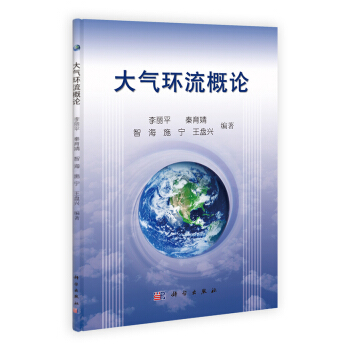
![中外物理學精品書係·引進係列(19):受控核聚變中的等離子體與材料的相互作用(影印版) [Plasma-Material Interaction in Controlled Fusion] pdf epub mobi 電子書 下載](https://pic.tinynews.org/11300129/rBEhWFIUU-wIAAAAAAMp7O9ZpJwAACR6ACWhdoAAyoE577.jpg)
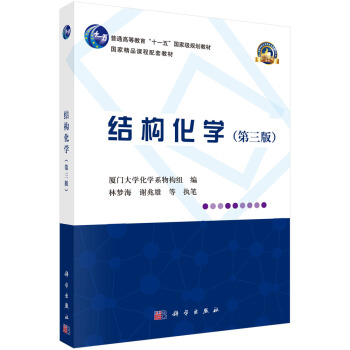
![橢圓麯綫的有理點 [Rational Points on Elliptic Curves] pdf epub mobi 電子書 下載](https://pic.tinynews.org/11647744/54e1b516Nc907b294.jpg)
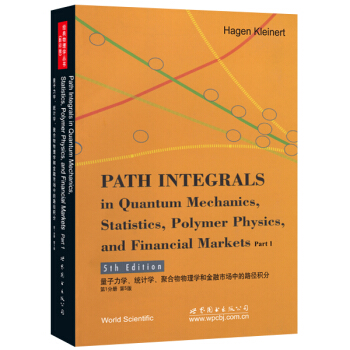
![量子群入門 [A Guide to Quantum Groups] pdf epub mobi 電子書 下載](https://pic.tinynews.org/10184614/52569431-fb1f-4b41-9463-fd47031ffa99.jpg)
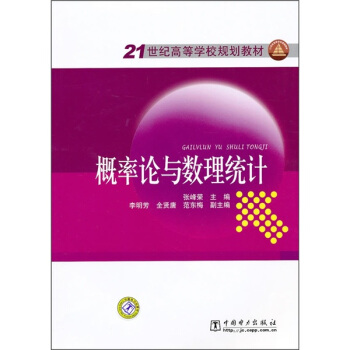
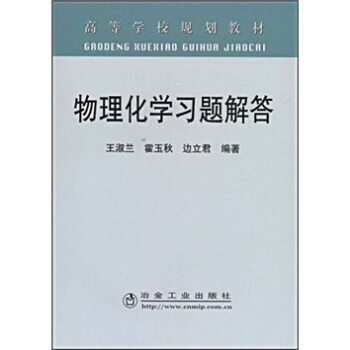
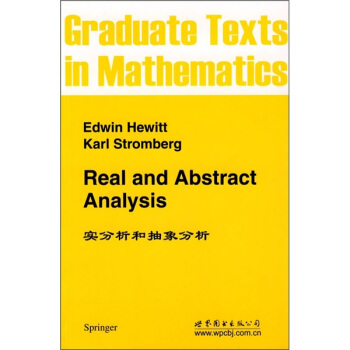
![綫性代數群 [Linear Algebraic Groups] pdf epub mobi 電子書 下載](https://pic.tinynews.org/10857737/fcb2f257-227e-43db-bed7-c73076c42824.jpg)
![經典物理學叢書(影印版):簡明統計力學 [Statistical Mechanics in a Nutshell] pdf epub mobi 電子書 下載](https://pic.tinynews.org/11316302/rBEhU1I4U_oIAAAAAAI69WH8VOoAADQsAOJkQ4AAjsN983.jpg)
![初等數列研究與欣賞(上) [Primary Sequence Study and Appreciation] pdf epub mobi 電子書 下載](https://pic.tinynews.org/11879285/56e7d759Nb9bfd2cf.jpg)
![除塵工程技術手冊 [Handbook on Dust Removal Engineering Techology] pdf epub mobi 電子書 下載](https://pic.tinynews.org/11920147/5739c28cNcdf78f19.jpg)
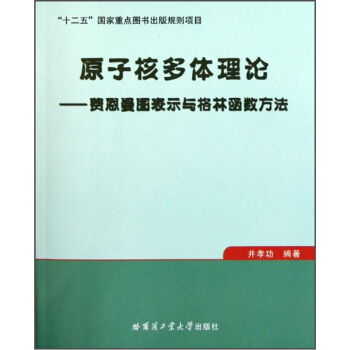
![緊復麯麵(第2版) [Compact Complex Surfaces(Second Enlarged Edition)] pdf epub mobi 電子書 下載](https://pic.tinynews.org/10904479/29188fd0-2c57-4e1e-8b2f-1f3d4b31bce4.jpg)
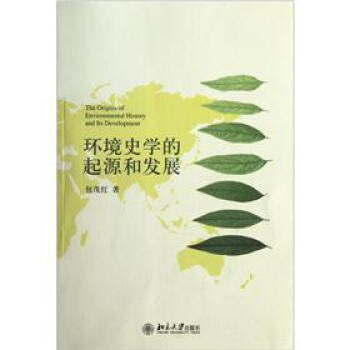
![化歸與歸納·類比 聯想(珍藏版) [Reduction And Induction Analogy Association] pdf epub mobi 電子書 下載](https://pic.tinynews.org/11883761/56f8fee3Nc9f86c4f.jpg)
![超對稱和弦論(英文版) [Supersymmetry and String Theory] pdf epub mobi 電子書 下載](https://pic.tinynews.org/10184594/e5b89bc9-3b3b-4fad-8861-ede9b682c51f.jpg)
